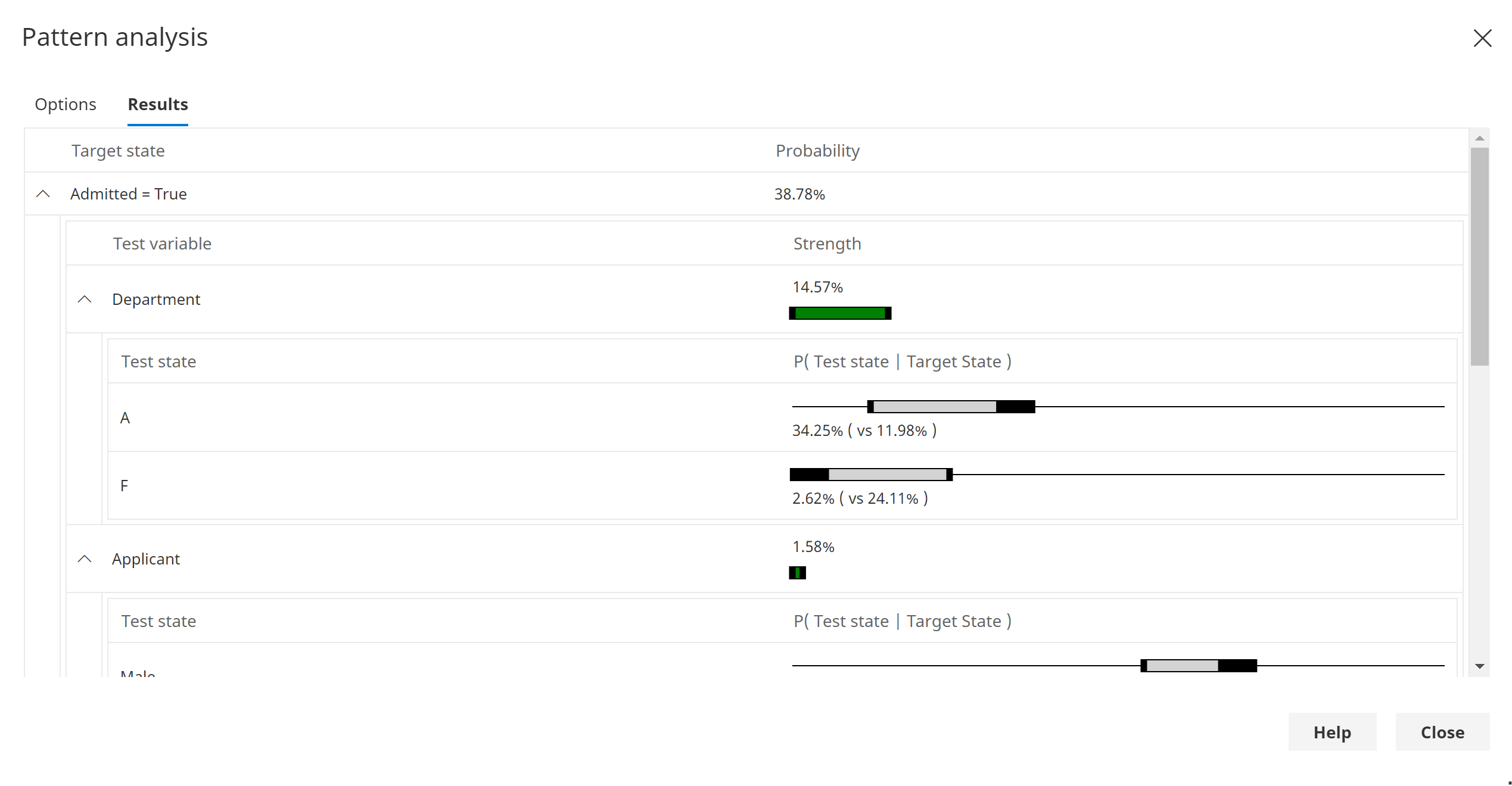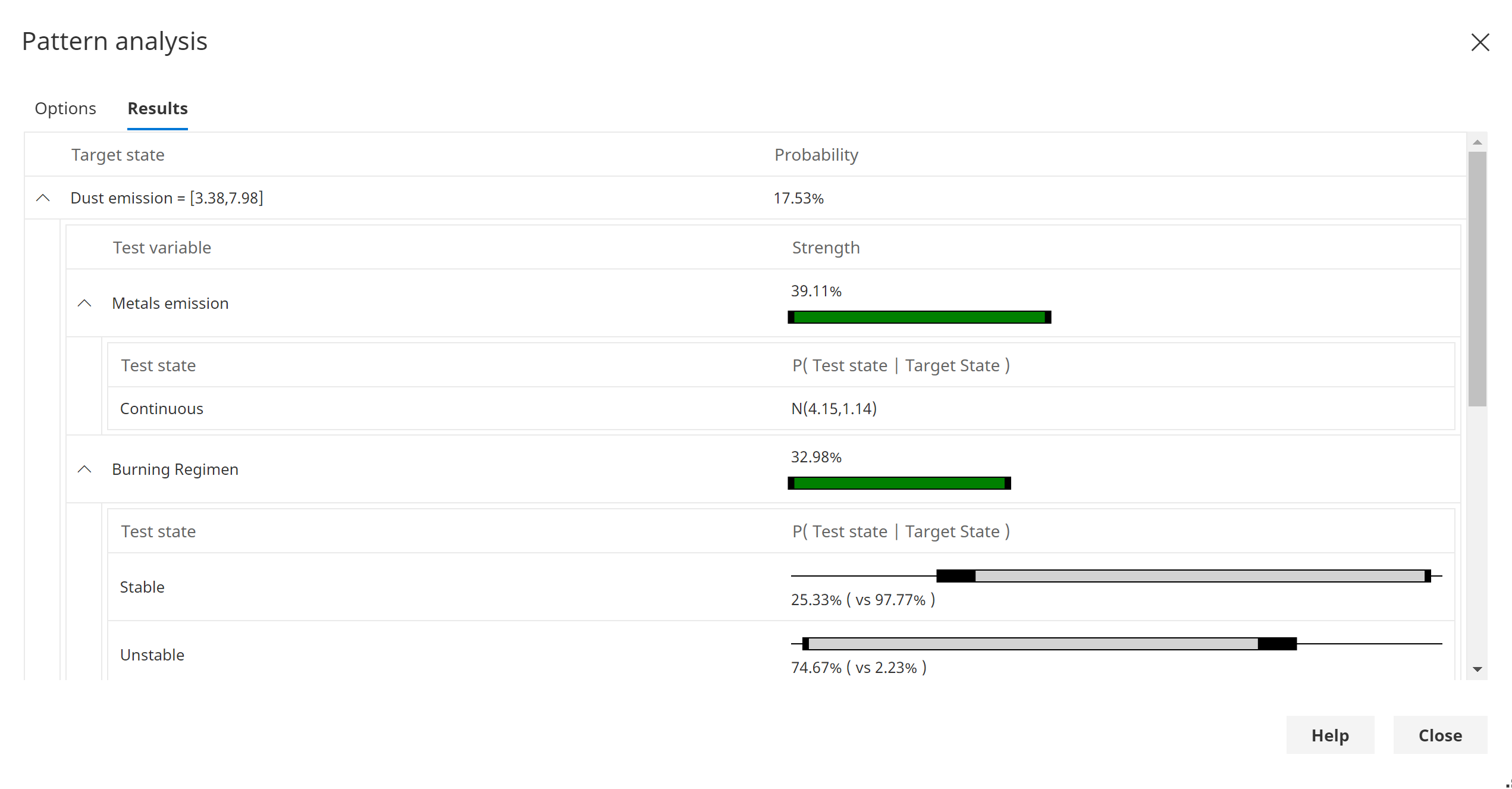Pattern analysis
Since version 8.1
For a tutorial please see Pattern analysis tutorial.
Introduction
Pattern analysis helps you understand how a target variable's states differ from each other.
For example, you might be interested in:
- The difference between those who purchased a product and those who did not
- How one US state differs from others.
- How different clusters (latent states) in a cluster model (mixture model) differ.
Results
The results tab, provides discrimination information between a discrete or continuous target state and the other states of the same variable.
The image below, demonstrates the tool on the 'Simpson's Paradox' example network included with Bayes Server. It clearly shows that 'Department' is the key discriminator of 'Admittance'.

Outputs
Information is output for each state t of the target variable. (discretized states if the target is continuous). Target states are ordered based on the maximum strength found over the test variables.
- The probability of each target state is shown along side its name.
- The Strength, which is displayed for each test variable, is the distance between the test variable given the target state t and the test variable given all other target states.
- Test variables are ordered by strength in descending order.
- For discrete test variables, a bar shows the difference between that state given the target state t vs all other target states. They are ordered by the biggest change.
- For continuous test variables, the mean and variance given the target state t are displayed.
Options
Help for options can be seen directly in the User Interface.
- Use network evidence - determines whether the calculations use the current evidence set on the network
- Top N variables - the number of test variables to output for each target state
- Top N states - the number of test states to output for each discrete test variable
- Target discretization - determines whether to discretize a continuous target based on the current evidence, or without evidence.
